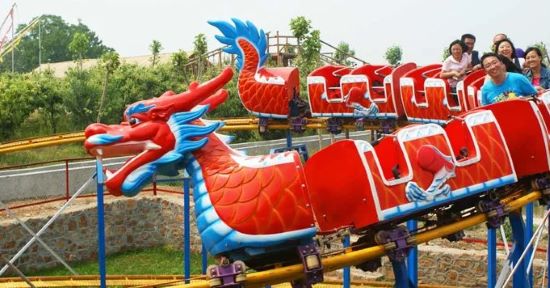


Roller coaster manufacturers balance thrills with safety through advanced design, testing, and maintenance.
Roller coasters are known for delivering exhilarating experiences, but their safety and performance are critical aspects that require meticulous attention. This article explores how roller coaster manufacturers ensure these elements through comprehensive design, engineering, and testing procedures.
Roller coaster manufacturers begin with advanced design processes to guarantee safety and performance. Utilizing computer-aided design (CAD) software, engineers create detailed models of each component of the ride. These models allow for precise calculations of forces, speeds, and structural loads, ensuring that the ride operates within safe parameters.
Design considerations encompass material selection, track layout, and vehicle configuration. Engineers must factor in gravitational forces, centripetal forces, and aerodynamic drag. Simulations predict the coaster’s performance under various conditions, ensuring that it meets safety and performance standards.
The choice of materials is vital for the safety and durability of roller coasters. Steel and wood are the primary materials used, each offering distinct advantages. Steel coasters are favored for their flexibility and ability to achieve higher speeds and complex maneuvers, while wood coasters offer a traditional experience but require meticulous craftsmanship to maintain structural integrity.
Manufacturers use advanced materials and construction techniques to ensure the coaster can withstand operational forces. Components like track segments and supports undergo rigorous testing for durability. Regular inspections help identify and address any signs of wear or damage, maintaining the ride’s safety and performance over time.
Before a roller coaster opens, it undergoes extensive testing to ensure safety and performance. Testing phases include:
Adhering to safety standards and regulations is essential for roller coaster manufacturers. These standards cover design, construction, and operation aspects. In many regions, roller coasters undergo inspections by regulatory authorities before they are permitted to operate. Manufacturers collaborate with these authorities to ensure compliance and address any concerns.
Ongoing maintenance is crucial for ensuring the safety and performance of roller coasters. Manufacturers provide guidelines for routine inspections, which include:
Manufacturers continuously seek to enhance safety and performance. Feedback from operators, performance data analysis, and technological advancements contribute to improvements. Upgrades may involve enhancing safety features or integrating new technologies to optimize the ride experience.
Innovations like advanced sensors and automated diagnostics help maintain high safety standards. Manufacturers stay current with industry developments and regulatory changes to ensure their rides remain up-to-date and compliant.
Kiddie coasters are designed with younger riders in mind, featuring lower speeds, gentler drops, and safety restraints suited for smaller bodies. The design principles applied to these coasters ensure they provide a safe and enjoyable experience for children while meeting stringent safety standards.
Proper training for ride operators is essential for maintaining safety. Operators are trained to manage the ride, monitor passenger behavior, and handle emergencies effectively. They are well-versed in the ride’s safety features and protocols, ensuring prompt and appropriate responses to any issues.
Roller coaster manufacturers ensure safety and performance through advanced design, rigorous testing, and continuous maintenance. By focusing on these areas, manufacturers provide thrilling yet secure experiences, making roller coasters both exhilarating and safe for all riders.
